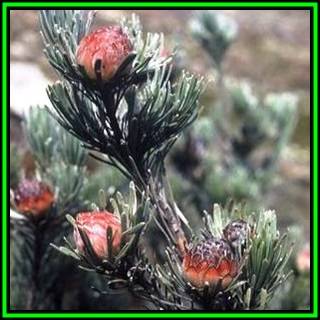
Leucadendron dregei Seeds - Endemic Shrub Protea Evergreen Cut Flower Fynbos - New
Check my rate
| Main centres: | 1-3 business days |
| Regional areas: | 3-4 business days |
| Remote areas: | 3-5 business days |

| Main centres: | 1-3 business days |
| Regional areas: | 3-4 business days |
| Remote areas: | 3-5 business days |
Leucadendron is a South African endemic genus in the Protea family, Proteaceae. The genus consists of about 80 species of evergreen shrubs and small trees. They are a prominent part of the fynbos ecoregion and vegetation type. Most species are shrubs that grow up to 1 m tall, some to 2 or 3 m. A few grow into moderate-sized trees up to 16 m tall. The leaves are spirally arranged, simple, entire, and usually green, often covered with a waxy bloom, and in the case of the Silvertree, with a distinct silvery tone produced by dense, straight, silky hairs. This inspired the generic name Leucadendron, which literally means "white tree". The flowers are produced in dense inflorescences; they are dioecious, with separate male and female plants. The seed heads, or infructescences, of Leucadendron are woody cone-like structures. This gave rise to their generic common name cone-bush. They are prized for their exotic-looking attractive flowers, cones and foliage. Leucadendron blossoms make excellent cut flowers, keeping their gorgeous red, burgundy, green or yellow color for up to three weeks. In the garden they do well in rockeries and also make excellent feature plants.
Leucadendron dregei commonly known as Dish Conebush, Orangecone Conebush or Summit Conebush in English and Oranjetolbos in Afrikaans is a rare species. It forms a sprawling shrub of around 60cm in height. It has narrow fleshy leaves and during summer it bears greenish flowers which are followed by very attractive red cones. This South African endemic species is found exclusively in the Western Cape Province’s Swartberg Mountains growing in habitats of sandstone fynbos, amid rocks at high altitudes.
|